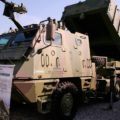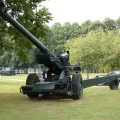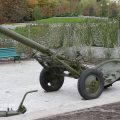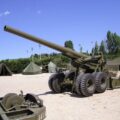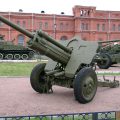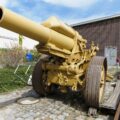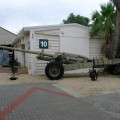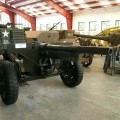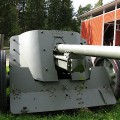
7.5 cm Gebirgsgeschütz 36 |
|
|---|---|
| Krajiny | Nacistické Nemecko |
| Úlohu | Horská pištoľ |
| V prevádzke | 1938-45 |
| Postavený | 1193+ |
Komisia 7,5 cm Gebirgsgeschütz 36 (7,5 cm GebG 36) bol 7,5 cm (3,0 palca) nemecký horský del používaný počas druhej svetovej vojny. V rokoch 1938 až 1945 bolo postavených najmenej 1 193 kusov. Bola to štandardná ľahká zbraň nemeckých horských divízií, armády aj Waffen-SS, počas druhej svetovej vojny.
Zdrojový: 7,5 cm Gebirgsgeschütz 36 na Wikipédii
| German 7.5 cm Gebirgsgeschutz 36 Mountain Gun Walk Around | |
|---|---|
| Fotograf | Vladimír Jakubov |
| Lokalizácia | Neznáme |
| Fotografie | 51 |
Súvisiace súpravy:
Nájdite súpravy na eBay:
The 7.5 cm Gebirgsgeschütz 36 (7.5 cm GebG 36) was a German mountain gun that was used during World War II. It was designed by Rheinmetall and produced by R. Wolf from 1938 to 1944. It was the main light artillery weapon of the German mountain divisions, both in the Army and the Waffen-SS.
The gun had a horizontal sliding breech block and a muzzle brake. It could fire a 5.75 kg or 5.83 kg shell with a maximum range of 9,250 meters. The gun had a variable recoil system that shortened the recoil as the elevation increased, allowing it to fire at high angles. The gun could be towed by horses or broken down into eight pack-loads to be carried by mules.
The 7.5 cm GebG 36 was a reliable and effective weapon for mountain warfare, but it had some drawbacks. One of them was that the gun would jump when fired at low angles with the strongest propellant charge, due to the leverage effect of the short trail spades. This made it less suitable for anti-tank role, which was sometimes required in mountainous terrain. Another drawback was that the gun was relatively heavy and cumbersome compared to other mountain guns of similar caliber.
Views : 1581
